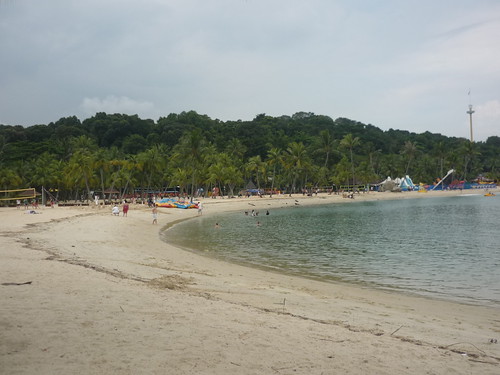
Today, I returned to Siloso Beach, intent on getting properly tanned after the most recent session was ruined due to rain.
It's quite a soothing experience, chilling out by the beach and napping in the afternoon sun, and admiring beautiful girls walking past. But of course, it gets a little dull after a while, so I also spent some time exploring and looking out for marine life.
The beach is patrolled by numerous birds, among them common mynahs (Acridotheres tristis), Javan mynahs (Acridotheres javanicus) and spotted doves (Streptopelia chinensis), looking for tasty tidbits on the sand.
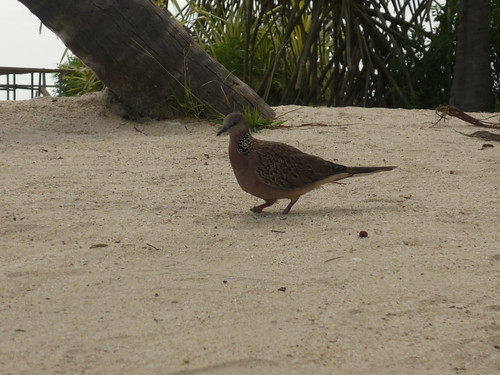
I noticed something odd about this particular spotted dove. Then I realised that it had no feet! The bird was shuffling around on stumps, but appeared to be in good shape. It didn't have any problems flying. I wonder what sort of unfortunate incident led to it losing its feet.
The sargassum (Sargassum sp.) that choked the beach on the previous visit had largely cleared up, although there were still clumps floating here and there. While I was swimming in the shallows, I came upon a juvenile halfbeak (F. Hemirhamphidae). Naturally, I didn't take any photographs, since I didn't have my camera at hand.
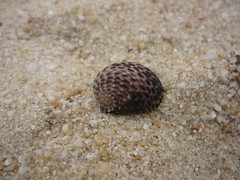
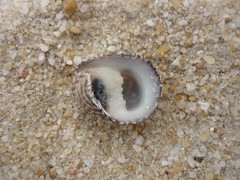
I found this pretty nerite shell on the beach. I have no idea which species it is; the common nerite species are highly variable, and I still have problems telling the various species apart.
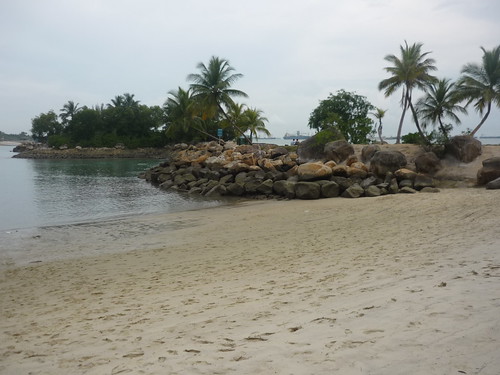
At the end of Siloso Beach, close to where the Naked Hermit Crabs conduct their shore walks, there are these large rocks which form part of a breakwater. These rocks form a hiding place for plenty of marine creatures.

Such as small mudskippers. These are probably dusky-gilled mudskippers (Periophthalmus novemradiatus).
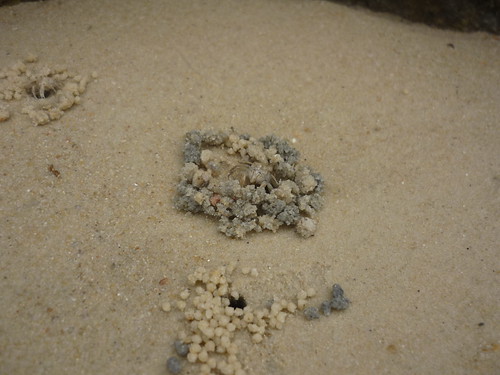
The beach here is also inhabited by sand bubbler crabs (Scopimera sp.).
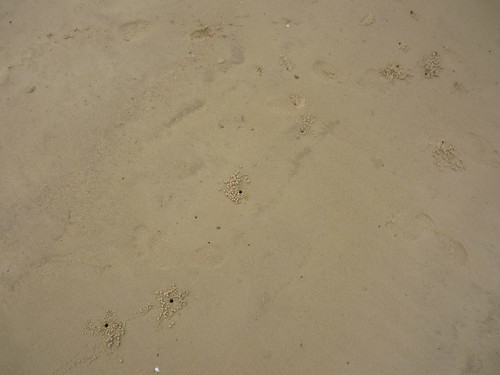
They're not present in huge numbers, unlike on the islets across the lagoon, but there's still a pretty sizeaable colony.
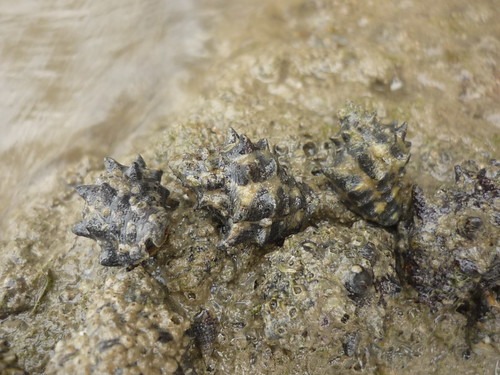
There are plenty of drills on the rocks. This should be Thais bitubercularis, which is distinguished from its relatives by the presence of spines on its shell. Unfortunately, this species is highly variable, and there are individuals which lack the tubercles on their shells. In such a situation, according to A Guide to Common Seashells of Singapore, the species can 'be distinguished by the shape of the penes'. Well thanks a lot, that was certainly very helpful for identification in the field.
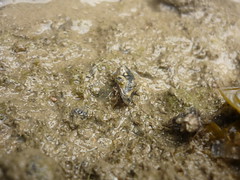

Tidal hermit crabs (Diogenes sp.) can be found here. The one on the left is wearing the shell of a lightning dove snail (Pictocolumbella ocellata), while the two in the other photo are wearing the shells of a drill (F. Muricidae), and an uncommon member of the top shell family called Euchelus atratus.

Here's a small group of live lightning dove snails.

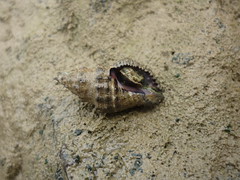
This snail is a perfect match for the photos of Drupella concatenata in A Guide to Common Seashells of Singapore. The book states that it's a specialised predator of coral polyps, and that it's often found on Acropora or staghorn coral. Is this a sign that we've got corals growing amongst these rocks? Or maybe there's coral on the outside of the breakwater...

A juvenile halfbeak, the same species as the one I saw while swimming. It's easy to see why they're sometimes mistaken for floating rubbish.

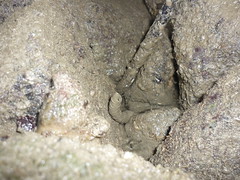
Some sort of sea aquirt on the left, and the tube of some sort of worm on the right. Switching on the flash and taking photos inside these dark crevices reveals a lot of hidden life.

A tiny squid, just like the one I saw on the previous visit, swims into view, but proves too alert and too skittish to pose for decent photos.

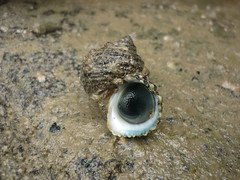
I realise that the turban snails that I've been finding in these murky swimming lagoons are Turbo intercostalis. This species is also present on the rocky shore and coral rubble at Tanjung Rimau, along with its close relative Turbo bruneus.
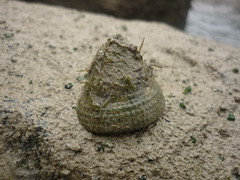
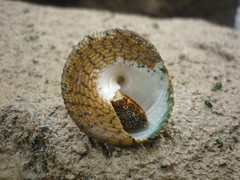
I nearly miss this spotted top shell (Trochus maculatus), with its well-camouflaged shell, but I think my skills at finding these snails have been honed by practice on Tanjung Rimau.

Is this a sponge or a sea squirt?

I think this one's a sponge. I need to brush up on my sessile organisms.
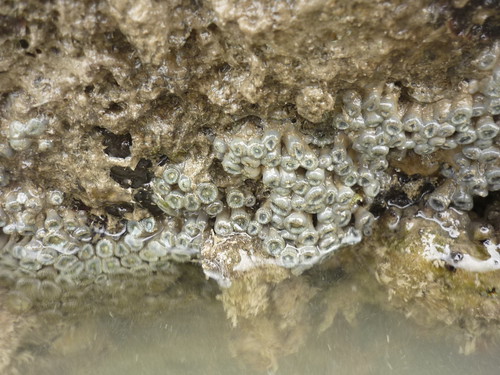
Oh look, a small colony of zoanthids.
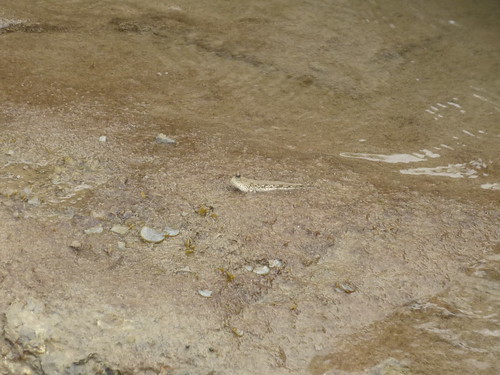
I find a mudskipper that's larger than the small ones I saw earlier on. I think it's a gold-spotted mudskipper (Periophthalmus chrysospilos).
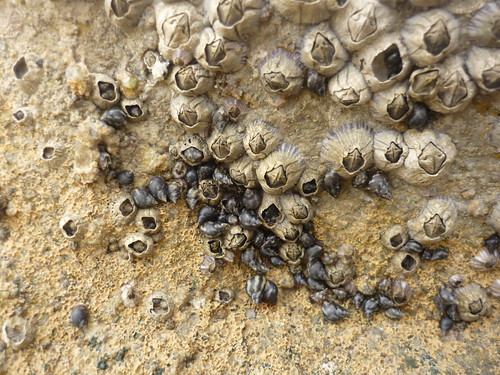
High up on the rocks, clustered amongst the acorn barnacles (Balanus sp.), are countless tiny periwinkles (F. Littorinidae).
I had to go wash up and prepare for my first monitoring session with TeamSeagrass. But I knew that if the tide was still low enough after that, I would be back to check out more of Siloso Beach after dark.
Coming up: I explore one of the islets off Siloso Beach at night. What will I discover?
This is part 2 of a 2-part series on a trip to Siloso Beach on 17th October, 2008.
Part 1: Siloso suntan (this post)
Part 2: Siloso: seagrass and sea stars